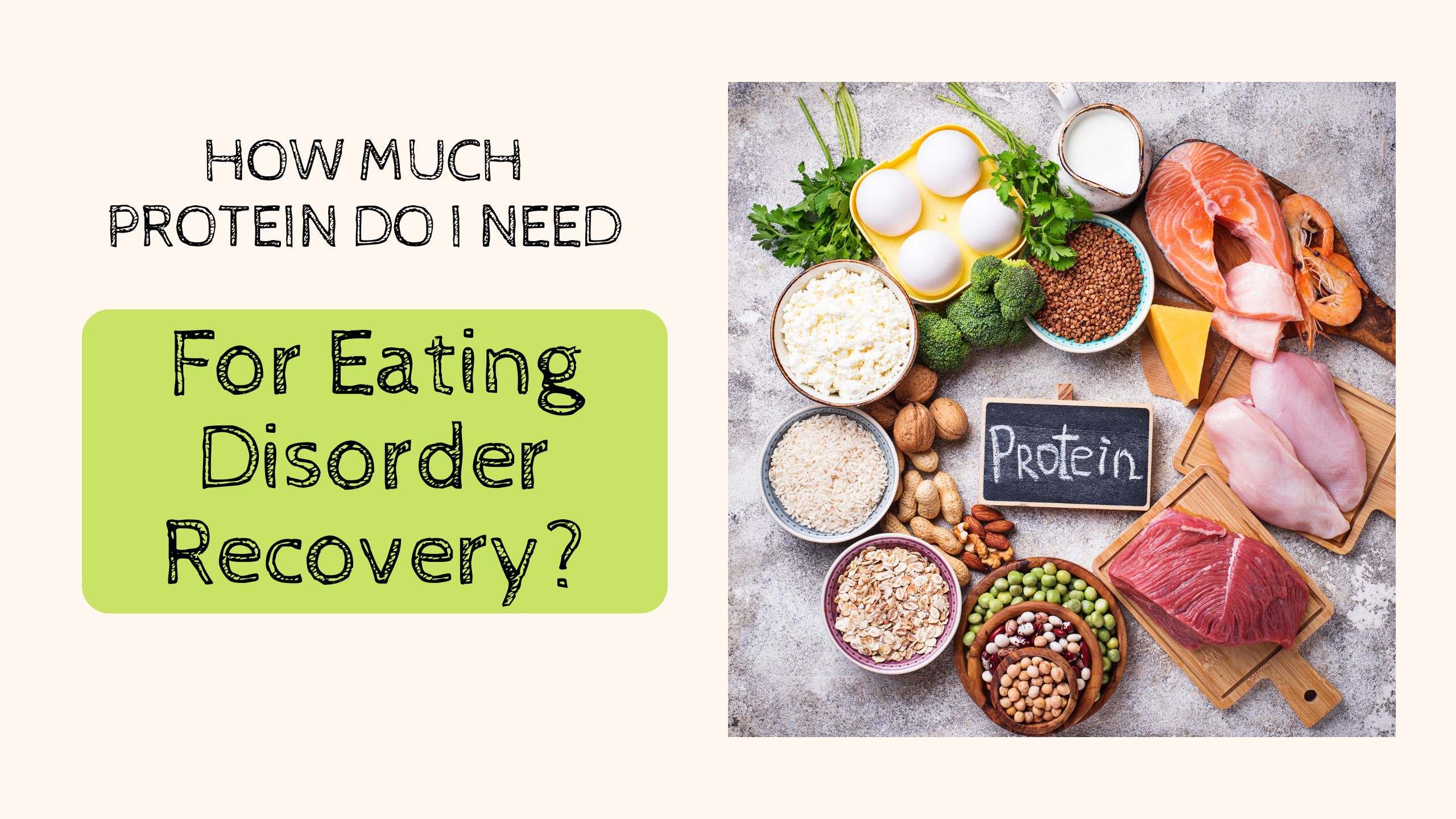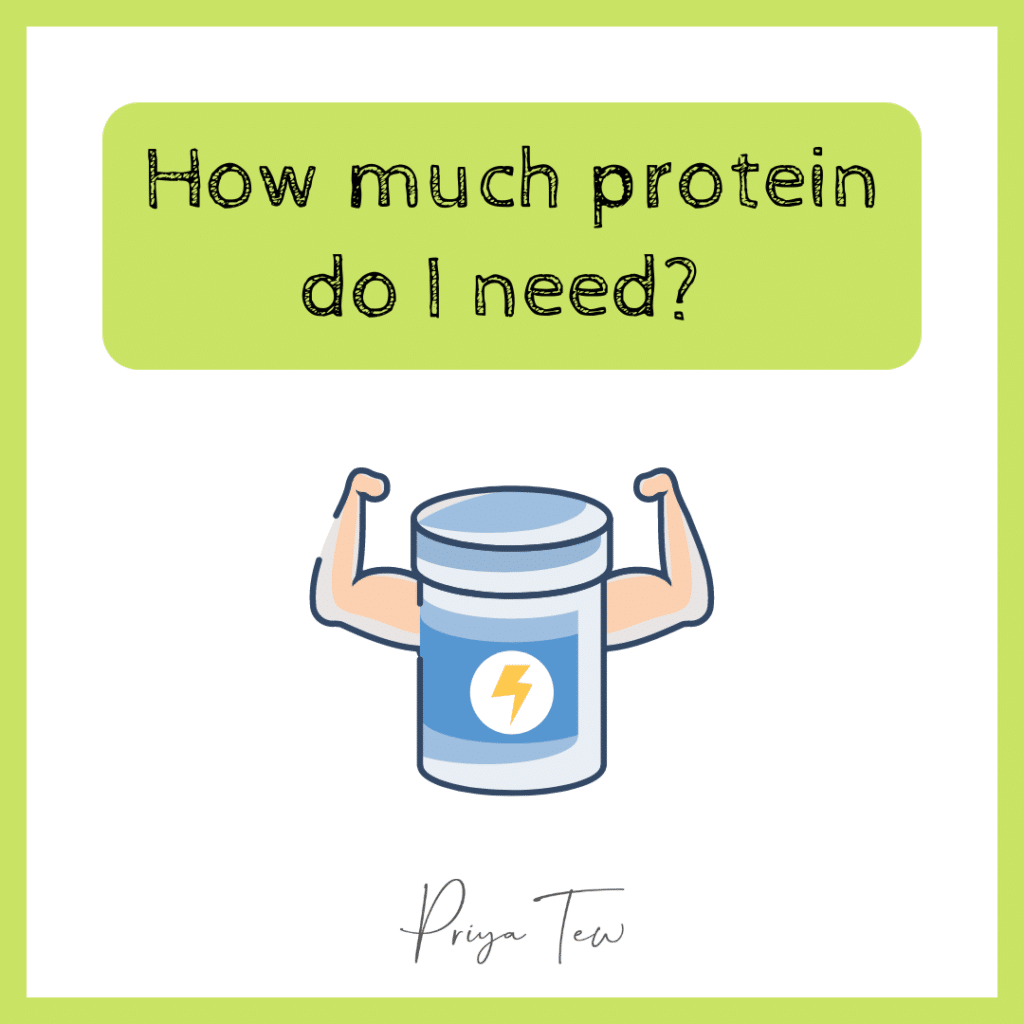
When you are planning an eating disorder meal plan for recovery it can be hard to know how much of each food group you need. Protein is one food group to focus on making sure you get enough of. Why? Well protein is needed for growth and repair of tissues and muscle. This is key if you have lost weight and therefore muscle mass. Protein is also key for hormones which are important in so many part of recovery, for transporting things such as haemoglobin around the body and they are a vital part of the immune system too.
Which mean it really is important you eat enough protein and have the right balance of protein in your diet.
It is also worth highlighting that protein can be highlighted as being the best macronutrient. In reality, protein isn’t superior to other macronutrients and an eating disorder meal plan needs to have a balance of each food group in it. In actual fact you can have too much protein in your diet which can cause your body to have to work harder to do it’s jobs. Certainly in the case of restoring your menstrual cycle, too much protein and not enough carbs and fats can be a reason why you may not be getting anywhere. As with most things in life, balance is key!

What is protein needed for?
Protein is a key nutrient that we need for growth, repair and maintenance of tissues and muscles in the body. By muscle we are including the heart muscles and muscles of the digestive system too. You can see how vital this is if you have lost muscle mass through diets or restrictive eating. We also need proteins (enzymes) for many reactions that occur in the body and to transport things around (transport proteins). Hormones are key for how are body works and these are also many from proteins. So you can see that eating protein is not just about building big muscles! Protein can also be used as an energy source. They are needed for structural support, such as collagen in our skin and they make up antibodies to recognise invaders and trigger the immune response.
Our protein needs change across the life course. You need more when you are growing and healing or unwell. Therefore if you have lost muscle mass or if you are very active, you may have higher protein needs on your eating disorder meal plan.
How much protein do I need on my eating disorder meal plan?

In the UK, the average person is more than meeting their protein needs. We know this from surveys carried out. The intakes of protein tends to be above the above the Reference Nutrient Intake (RNI) even in vegetarians and vegans. The normal recommendations for protein for an average person are based on body weight rather than blanket upper and lower limits like some other macro- and micronutrients.
The RNI is 0.75g of protein per kilogram bodyweight per day for adults, although you may need more for certain reasons. Here lies the key! These recommendations are not aimed at someone who is unwell or recovering from an eating disorder. You are likely to need more protein but also more of all the main food groups.
So do I need to track my protein intake for my eating disorder meal plan?
There is no need to track or count your protein intake. Whilst there is a recommended amount (around 50g a day for a woman) your body will have higher needs when you are malnourished and working on recovery. Instead of tracking your protein focus on including nourishing protein foods at every meal and at most of your snacks too.
What foods contain protein?
Top contributors to protein intakes in the UK are meat and fish, cereals and cereal products and dairy products.
But let’s think through a range of protein sources as there are so many ways you can include protein in your diet and some of these will be useful to add to your meals and snacks without making them too unmanageable.
| Food Group | |
| Dairy and Eggs | Milk, cheese, yoghurt, plant based options of these foods, milk powder. Eggs are protein rich. |
| Meat and Fish | All meats contain protein as does fish and shellfish. |
| Plant sources | Beans and pulses are a good source of protein, for example chickpeas, lentils and kidney beans. Seitan, tempeh and tofu are also protein rich foods. |
| Nuts and Seeds | Nuts and seeds can be a great way to add extra protein to a meal or snack. Nut butter, hummus and tahini also count. |
| Cereals and Grains | Quinoa, rice, and some forms of pasta (pea, lentil and chickpea) can be good protein options. |
It is important for health to include a range of protein-containing foods and we are recommended to eat more plant-derived protein foods where possible. Good ways to do this include:
- adding nuts and seeds to breakfasts, salads, stir fries, snacks
- using hummus as an extra spread in sandwiches
- trying pea or lentil pasta
- adding lentils and beans to soups and main meals
- snacking on edamame beans, roasted chickpeas and pea snacks.
- blending tofu into smoothies or sauces
How can I get enough protein in my eating disorder meal plan?
To help achieve adequate protein, plan to have sources of protein in all of your meals and most snacks across the day. If you are exercising, then also include a source of protein within 2-3 hours of exercise to support muscle growth and repair. You shouldn’t need to use a protein supplement as food is alwasy the better option, but if you do, check this is a high quality one. Working with a specialist eating disorder dietitian can help you plan this out. You can also get tips using my eating disorder recovery meal plan guide.
How much protein should I have at each meal?
More isn’t necessarily better, so you do not need to have all your protein in one meal or large intakes at once. Instead it can be better to focus on getting a few sources in throughout the day to support your bodies needs.








Some examples: (protein foods in bold)
Protein in Breakfast:
- – Milk with cereal
- – Yoghurt with fruit and granola
- – Nuts on top of porridge
- – Nut butter on toast
- – Eggs on toast
Protein in Lunches/Dinner:
- – Hummus
- – Cheese
- – Eggs including quiche, omelette, frittata
- – Meat or fish
- – Beans and pulses
- – Tofu or soya mince
Try: adding seeds on top of salads and soups, adding beans to stews and vegetable dishes, using lentils in vegetable soups, grating cheese on top of meals.
Protein in snacks:
- – Nuts and seeds
- – Nut butter on toast or with fruit
- – Boiled eggs with spinach
- – Fruit and yoghurt
- – Roasted chickpeas or edamame beans
- – Smoothie with milk, seeds and protein powder
- – Nut bars or protein bars
- – Cheese and crackers
- – Chia seed pudding
How many meals and snacks do I need for eating disorder recovery?
I always recommend that if you are working on weight restoration you aim for 3 meals and 3 snacks and include protein at every meal plus a couple of those snacks. This could be a plan you actually stick to long term or you may end up having larger meals and less snacks when you reach maintenance. Everyone is individual so it really depends on what works best for you.
Remember it is important to eat enough to meet all your nutritional needs, for your energy and to enable your body to function properly. This can require more nutrition than you may originally think.
An example eating disorder recovery meal plan:
Breakfast: Porridge with fruit, milk and seeds
Snack: Banana and nuts
Lunch: Tuna sandwich with raw vegetables, hummus and crisps.
Snack: Flapjack with seeds
Evening Meal: Pasta with bolognaise (can be minced meat or plant mince), vegetables.
Snack: Fruit and yoghurt
For more advice on planning meals please download my FREE Meal planner here.